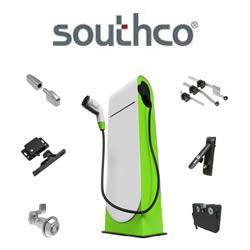The average power consumption per server quadrupled from 2001 to 2006, while the average number of servers doubled and is expected to grow another 50% by 2010. This rapid growth has resulted in data centers typically consuming up to 100 times more energy per square foot than a typical office building.
THE GREEN DATA CENTER
| The average power consumption
per server quadrupled from 2001 to 2006, while the average number
of servers doubled and is expected to grow another 50% by 2010. This
rapid growth has resulted in data centers typically consuming up to 100 times more energy per square foot than a typical office building. |
| The Green Data Center cutting energy costs for a powerful competitive advantage |
|
© Copyright IBM Corporation 2008 |
After an intensive study of server and data center energy efficiency for Congress, the U.S. Environmental Protection Agency (EPA) reported that the U.S. data center industry is in the midst of a major expansion period spurred by increased demand for IT capacity to support business growth. The Agency listed several trends that are stimulating this demand, including:
IT management is responding by building more data centers. In recent
To satisfy this robust demand for computing capacity, IT executives are One result of this IT capacity growth is that data centers have become
As data center energy use increases, the cost of that energy is increasing
as well. According to Energy Insights, an IDC Company, a recent survey
for Johnson Controls revealed that “[s]eventy-nine percent of businesses
expect their energy costs to increase [over the next year]. More than half
believe prices will increase 6-20%.”6 Business demands, IT capac- And this shift in the competitive landscape is being noticed by high-level CFO: finding the truth about energy costs CEO: building positive environmental brand stewardship IBM has a decade of experience in owning and managing eight million
For example, a major IT company needed to support its growth in computing With rapid IT growth, companies often are looking to consolidate data Virtualize and simplify—increase the efficiency of your existing servers UPMC worked with IBM in virtualizing its Wintel and UNIX® systems and Generating significant heat output from its ultradense blade servers. By Manage, measure and enhance—take control to automate Act now—cut costs and gain competitive advantage today IBM Server Optimization and Integration Services – server consolidation NOTES |
The content & opinions in this article are the author’s and do not necessarily represent the views of AltEnergyMag
Comments (0)
This post does not have any comments. Be the first to leave a comment below.
Featured Product



